Teaching in New Media
6/7/21
What is New Media?
New media is an ever evolving form of digital communication. We tend to think of new media in terms of sophisticated and computer-based technology. For me, new media consists of past ideas that inspire innovation. When I think of new media, I tend to think about it as a new way of thinking or an alternate way of doing.
“New media art” is a combination of digital communication and artistic expression. New media art can take on numerous visual, audio, and sensory forms. To teach in new media, teachers and students need to push the boundaries of digital and non digital tools. In a new media classroom, the distinction between teacher and student can get blurred because innovation is a melding of ideas. These ideas can be influenced by anything.
AI Portrait Experimentations with Deep Dream
Had lots of fun using the Deep Dream generator until I ran out of computer energy.
I took my MassArt student ID photo for the top 2 sets of photos and combined them with some of my repeat patterns.
Also, I took a photo of my 4 yr old self and used one of the thin line filters.
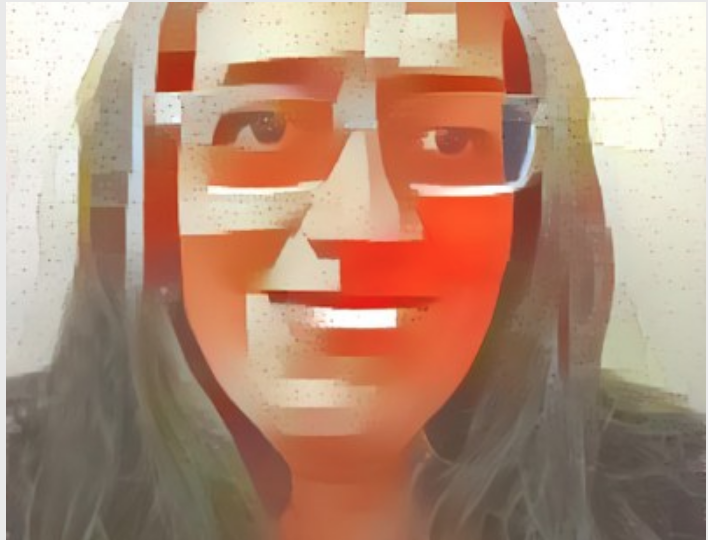
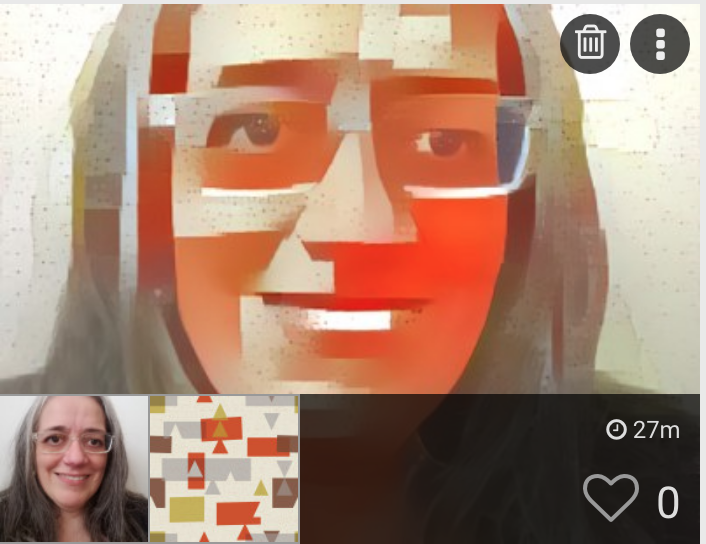
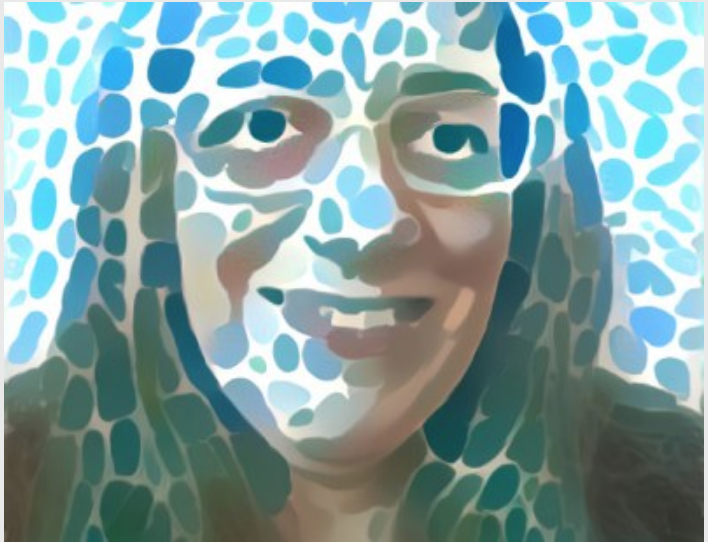

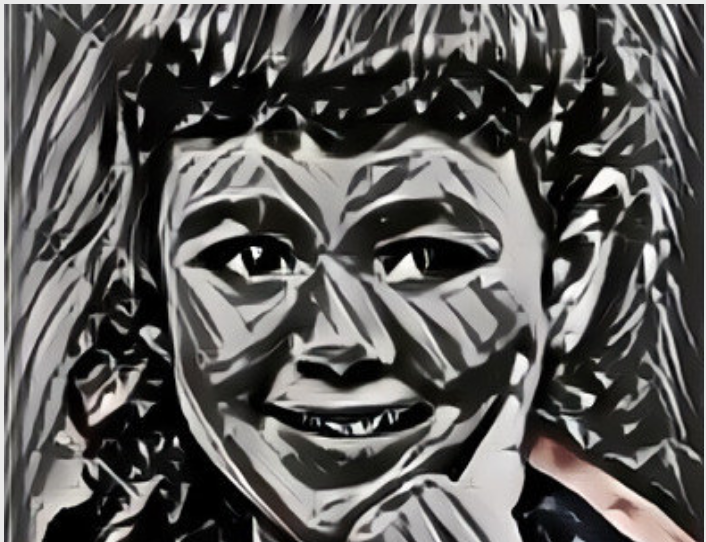
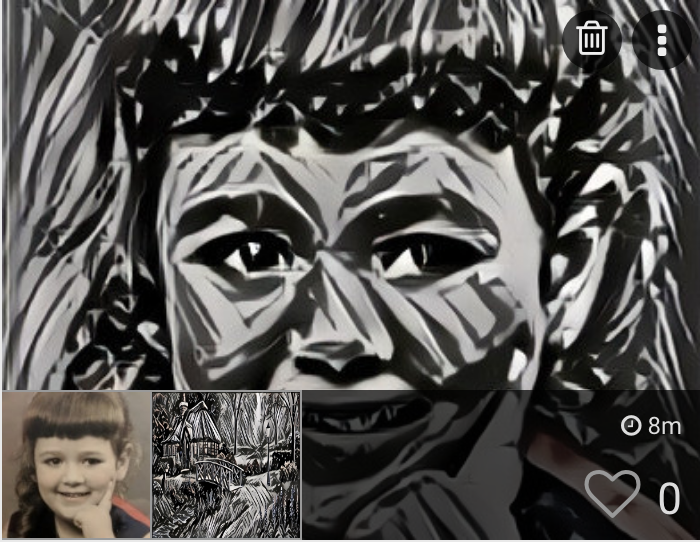
Processing and the CODE TRAIN
The CodeTrain tutorials does a great job of explaining all the intricacies of code line by line. In a classroom, I would take a similar approach to teaching the subject but I think some further introductory details may need to be added.
If I were to teach how to write code in a classroom, I think I would start of with some basic HTML. JavaScript takes HTML and makes it more robust. Diving into JavaScript might be intimidating to some students if they are not familiar with the need parentheses, brackets, commas, and semicolons. An introduction to the smallest building blocks of syntax before diving into Javascript would help students understand code better and maybe eliminate some fear of coding. Also, I think it would be smart to let students know that code is just a language. Those punctuation marks are already used in math and in their language/writing classes. Code combines math and language. This would give students a link to subject and topics that they already have encountered in other classes. I was also thinking about ELL and ESL students and how their perceptions of coding might change if they see code as a language.
There’s a lot of information in the Coding Train. I have learned a lot and plan on watching most of the tutorials. Daniel Schiffman combines energy, humor, and knowledge which keeps the viewer engaged. An easy going approach to code is smart because it would help students who are apprehensive when it comes to using coding.
6/8/21
P5.js
I came up with a raindrop effect that builds up upon itself until you click on it. Then, the background color randomly shifts to another color. The raindrops also appear as random colors that are transparent.
Click for the P5.js example
Reflection on the Reading
Lev Manovich’s definition of new media is a helpful reference. The 5 concepts that Manovich describes are:
Numerical Representation: Every object in new media is represented by a number.
Modularity: also referred to OOP (Objected Oriented paradigm). Components can be mixed in many ways to create different behaviors or intelligences
Automation: Software creates transformations and can be sometimes interpreted as Artificial Intelligence
Variability: Can create unlimited versions and can learn and anticipated user interactions
Transcoding: when one object can interact with another.
6/9/21
Google Sheets Image
I created a kitten in mid-leap for my pixel exploration project. I had previously written a quickie lesson plan using Google sheets to have students explore pixels but I didn’t know how to make each cell uniform in size. Pixel art reminds me of Perler beads, cross stitch, and a 2D MineCraft.
Three Current New Media Artists
REAL-TIME DEPRESSED
Thomas Webb is a new media artist from the UK who is known for his digital infinity mirrors. The technology he uses involves the use of mirrors, high powered commercial LED displays, and custom built computer hardware. In 2018, he exhibited “REAL TIME DEPRESSED”. This mirror was connected to Twitter via a server which searched for tweets that expressed sadness. These tweets were then uploaded and sent to the infinity mirror for display. The posts appeared in realtime. He described his vision of digital media shifting into 4 dimension through the function of each viewer perspective.
Thomas Brown & Guillaume Ferrand collaborated on an online platform “Correspodance” in 2020. It reflected the shifts in communication during lockdown. In the spirit of collaboration each artist involved reflected on their personal yet universal experience with isolation.
Mario Klingmann is considered a pioneer in computer learning in art. In “Appropriate Response”, the viewer kneels on a kneeler while a randomly generated quote starts to form on the split flap display. The quote is a random combination of words that are generated through an algorithm. Mario found a vast number of quotes and fed them into a processor which learned the grammar, syntax, sentence structure, etc. The algorithm’s random quote had a profound effect on some people, akin to a religious experience.
Mosaic Code Instructable
Mexican talavera tiles were inspired by tiles from Spain. European settlers brought their knowledge of tiles and glazing to Mexico in 15th and 16th centuries. The Mexican indigenous people created their own interpretations of these tiles. This style was also translated to other ceramic objects such as bowls, vases, pitchers, etc.
In this project, the students will create simple digital tiles in Google Drawing (or another drawing software). The tiles can reflect the colors and shapes found in the Talavera tiles, but in a more simplistic style. Students can also take their own approach in designing their tiles.
The students will also create a drag and drop activity using Google Slides.
The goal is to create a classroom "code" that can describe the specific distinctions amongst the tiles. The code will also need to include where to place tiles. Math symbols and punctuation marks can be used instead of words.
Week one’s question and response
How should we define New Media? What is the contemporary function of new media and its relationships to the art world and education? How can we identify trends and patterns in making, learning, and teaching.
When I think of new media I tend to think about how new technologies affect the way we think and act. New media exists in many forms, a movie, a song, an image, a compilation of data, etc. The way we interact with these forms of media evolve. This evolution creates a time stamp of technological advancements. So, new media is relative to a point in time. As technology advances so does new media.
In art, new media can be many things. The concept of new media having 2 layers (the cultural layer and the computer layer) helps me understand how it relates to art. The cultural layer defines the community or an individual through songs, images, stories and other descriptive elements. The computer layer consists of functions and processes that allow the cultural layer to exist. New media art is when an artist creates an artifact in the the cultural layer through the use of the computer layer (or technology)
The internet is an example of the 2 layers. On one side is a mountain of information that describes different peoples, regions, products, processes, and more. The other side holds the code that allows the internet to run. The internet is a powerful tool in education because it serves as an encyclopedia of all that is humanly possible. New media has changed the way we learn and teach. We have greater access to the human layer which means we have greater access to information. As the web has evolved so has its use in education. Although it is hard to predict trends in such a complex environment, it is safe to say that teaching and learning will change for the better as new media evolves.







